Welcome to the exciting world of SEO content!
SEO is like having a secret recipe that combines the right ingredients of creativity, strategy, and technical know-how to make your content shine in the vast digital landscape.
But here’s the best part – SEO content is not about sacrificing your unique voice or compromising your creativity. On the contrary, it’s about understanding search engines’ principles to rank content and finding better ways to weave those elements into your writing.
In this comprehensive guide, we’ll walk you through the essentials of SEO content, from keyword research and optimization techniques to crafting engaging meta tags, building quality backlinks, and much more…
So grab your metamorphic SEO pen and embark on a journey to unlock the true potential of your content, elevate your online presence, and connect with a broader audience.
Get ready to infuse your writing with the power of SEO and watch your content soar to new heights!
1 What is SEO Content?
Content optimized for search engines while also giving your users valuable and pertinent information is referred to as SEO content. Essentially, it involves producing content that appeals to both readers and search engines.
SEO content aims to align the needs of the target audience with the algorithms used by search engines to determine the relevance and rankings of the content.
Informative blog posts, product reviews, how-to guides, video tutorials, infographics, etc., are all various forms of SEO content.
2 The Evolving Landscape of SEO Content
SEO has traditionally concentrated mainly on keyword optimization and other technical factors to increase a website’s exposure in search engine results. But recently, search engines—especially Google—have evolved substantially. They have become more competent in understanding user intent and delivering more personalized and useful results.
Any website may, in fact, have negative effects from Google algorithm alterations, resulting in a drop in its rankings. This frequently happens when websites disregard Google’s guidelines, particularly those related to avoiding hidden content, keyword stuffing, and other spam-related practices.
Google’s helpful content system update is a crucial part of Google’s automated ranking systems and can demote or promote content based on its perceived helpfulness.
Simply put, when evaluating and ranking web pages, Google prioritizes content that is useful, informative, and relevant to the search queries.
For example, if your website provides detailed and well-researched information, effectively addresses user questions, and offers useful solutions, Google is more likely to rank and promote your content in search engine results.
These developments have led to a shift towards a more user-centric SEO approach. Search engines now prioritize content that helps users by answering questions, solving problems, and providing valuable insights. They aim to deliver the best possible user experience by providing high-quality, informative content.
In a study by the Content Marketing Institute, 90% of the most successful content marketers prioritized their audience’s information needs over their promotions.
Despite the proprietary nature of the search engine, Google provided the internal workings of the web search engine and how user data is collected.
In the context of SEO, focusing on user intent, keyword optimization, producing in-depth and complete content, improving user experience, and providing useful information are various instances of creating helpful content.
Now let’s explore practical tips and techniques to create SEO content that both search engines and your readers will ****!❤️
3 How to Create SEO Content?
3.1 Understand User Intent and Audience Needs
Have you ever wondered what sets apart successful content from the rest?
It all boils down to understanding user intent and meeting your audience’s needs. When users look for queries in search engines, they have a specific intent or a specific purpose in their mind. It’s important to decipher that intent and align your content accordingly.
Take the time to research, analyze and personalize the content experience to make a lasting impression on your audience.
For instance, if your audience searches for “best budget smartwatches,”. What kind of content do they expect? A list of affordable options, comparisons between various watches, or recommendations. Right? If you provide in-depth reviews of high-end smartwatches, you may miss the mark!
So now, your next question for us will likely be: how can you resonate and analyze user intent to ensure your content aligns with what your users are looking for?
The answer is: when it comes to SEO content, quality matters. Craft well-researched, informative articles that provide practical value to your readers. Be comprehensive, covering different aspects of the topic, and incorporate relevant examples, case studies, or statistics to enhance credibility and engagement.
Search engines reward comprehensive, detailed content that thoroughly answers your users’ queries. When creating SEO content, writing for your audience should be your priority. Aim to provide in-depth information, step-by-step guides, and practical examples that help your audience take action or gain a deeper understanding of a topic.
So while writing a guide on “best budget smartwatches,” address the specific needs of your audience and create content that resonates and keeps them coming back for more!
Learn more about understanding the search intent from keywords and what it means for your business with these real-life examples.
3.2 Conduct Keyword Research
The Role of Keywords in SEO
Can you perform SEO without having knowledge about keywords? Probably but not successfully.
One of the most important steps in producing SEO content is keyword research. Keywords play a vital role as they serve as a link between what users search for and the content that search engines present to them.
You can optimize your content by identifying the right keywords to match what your users are searching for. Keywords reflect the search intent of your users.
One reason keyword optimization is crucial is that effectively utilizing keywords communicates what a webpage is about to search engines. This increases the likelihood that a search engine will find a webpage related to a certain query.
With that said, it’s important to understand that Google utilizes a variety of signals, not simply keywords, to evaluate whether a page is relevant for a query.
Conducting Effective Keyword Research
Keyword research is essential for SEO content as it helps to understand user intent, increase organic exposure, drive targeted organic traffic, analyze competitors, plan and organize your content effectively, and create a long-term SEO strategy.
You can generate content that satisfies user demands, ranks higher in search results, and ultimately helps you reach your company goals by devoting time and effort to thorough keyword research.
For instance, suppose you manage a blog on fitness. You can focus on more targeted keywords such as “beginner-friendly exercises for weight loss” or “best post-workout nutrition tips” rather than just using general terms like “fitness tips.” These precise keywords identify user intent and raise the relevance of your content.
Rank Math’s Keyword Autosuggest feature helps you discover more keywords by pulling in automatic keyword suggestions from Google. Not only this, but Rank Math’s integration with the Google Trends tool(Rank Math PRO only) also helps you check the search trends for keywords and even compare them.

To identify keywords with a good combination of search volume and competitiveness, you can also utilize tools like Google Keyword Planner, SEMrush, and Ahrefs.
You can further refer to the below video to easily perform keyword research.

Long-Tail Keywords: Unlocking Hidden Opportunities
Unlike generic keywords, as the name suggests, long-tail keywords are longer and have more specific phrases. They provide various benefits, including lower competition, higher conversion rates, and better alignment with user intent.
For instance, instead of searching for the broad keyword “sandal”, a user may search for a long-tail keyword, say, “comfortable women’s walking sandals for flat feet”. This phrase determines the user’s intention and the specific type of sandal they’re looking for.
According to Backlinko analysis, 92% of all keywords entered into search engines are long tail keywords.
You can customize your SEO content to your target audience’s specific demands and intent by using long-tail keywords. This allows you to stand out from the crowd and enhance your chances of ranking higher in search engine results.
3.3 Crafting Engaging Headlines and Introductions
The Power of First Impressions
Have you ever come across the phrase, “You never get a second chance to make a first impression”?
It’s true not only in real-life situations but also in the world of writing. The importance of first impressions in capturing readers’ attention cannot be understated.
Writing intriguing headlines and introductions is the first step in capturing your readers’ attention. Create catchy headlines that highlight the significance of your content.
Creating Captivating Headlines
Before we begin creating fantastic headlines, imagine this: You stumble upon an article or a blog post with a boring, generic headline. Chances are, you’ll keep scrolling, right? That’s why headlines matter! Headlines are the first thing readers will notice, and hence, they have to be attention-seeking.
Take a look at this example:
“Boost Your SEO Game” vs. “10 Surprising Hacks to Double Your SEO Game Today”
Which one would you click on? The second one, right?
It promises something specific and offers a benefit that piques your curiosity. That’s the power of a captivating headline!
Write Compelling Introductions
Once you’ve successfully piqued your user’s interest with your headline, the following step is to pique their interest with an intriguing introduction. Consider it as an entry point to your content. Let’s take a look at how it works:
Assume you’re reading a piece about healthy eating. Which of the following introductions do you find more compelling?
a) “It is vital to maintain a healthy lifestyle in today’s fast-paced world.”
b) “Are you feeling sluggish and exhausted? Learn how to revitalize your body through healthy eating!”
We bet you’d choose option b! It immediately addresses a problem and offers a solution, making you want to read more. That’s the power of a captivating introduction!
Set a tone and establish a connection with your audience in an introduction. Remember that knowing your audience, catering to their wants, and building anticipation for your content are the keys to writing appealing headlines and introductions.
Here’s how we build curiosity amongst our readers by creating captivating headlines and introductions.
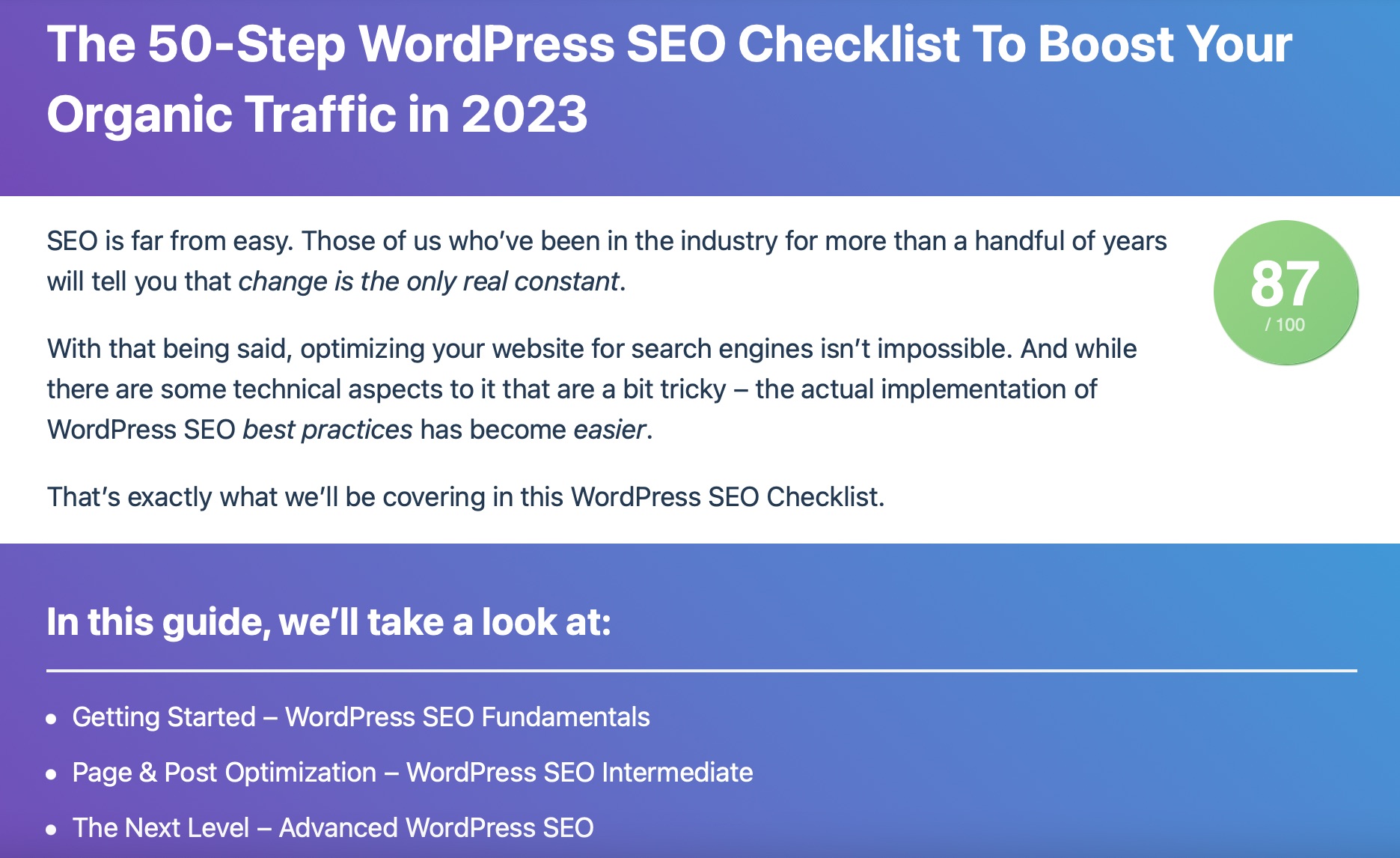
3.4 Create High-Quality, Valuable Content
Structuring Content for Readability and SEO
Creating high-quality and valuable content is all about striking the perfect balance between readability and SEO.
Imagine you come across a long, unbroken chunk of text. It feels overwhelming. Right?
Breaking your content into logical subheadings (H2, H3, etc.) helps the readers to navigate to your content easily and also enhances the readability of your content. Not only this, but search engines also can easily understand the structure efficiently.
You can use bullet points and numbered lists to make your content easier to digest, especially for readers who skim through your content.
Incorporating Keywords Naturally
By strategically including relevant keywords throughout your content, it’s easier for search engines to find out what your content is all about. Ensure that the keywords flow in naturally, and ensure you do not compromise on the readability of your writing.
Place the keywords in places that are contextually appropriate. Use synonyms and variations of your target keywords to reduce redundancy and make your content more engaging.
For example, if your target keyword is “healthy eating,” you can substitute synonyms such as “nutritious diet,” “maintaining a balanced lifestyle,” and so on.
Leveraging Visual Content for Engagement
Visual content is the secret ****** to captivate your audience and take your engagements to new heights!🤫
Use high-quality and appealing images that attract your users. Optimize the alt text of images. With the correct details, Google can more accurately interpret your images and display them in the search results.
The popularity of image search is also enormous, and it goes without saying that properly optimized images will typically rank higher in search results.
You can add infographics to present complex information in a visually appealing and digestible format. Just imagine a lengthy boring statistical report transformed into an eye-catchy infographic. Sounds amazing. Right?
You can also bring your content to life by creating stunning videos that allow you to showcase demonstrations, tutorials, etc. We create amazing video tutorials for our audience that unleashes our creativity and leaves a lasting impact on our audience.
3.5 Optimize On-Page Elements for Your SEO Content
Meta Tags: Titles and Descriptions
Break your content into logical subheadings (H2, H3, etc.). This helps the readers to navigate your content easily and also enhances the readability of your content. It is also essential to incorporate keywords naturally within the subheadings when relevant.
You must also take care of your meta tags that accurately represent your content and entice your users to click. Include your target keyword in the meta title and description while keeping them concise and appealing.
With Rank Math, you can modify your titles and meta descriptions effortlessly, without needing to write any code. Plus, it provides a convenient preview feature that removes all the guesswork, allowing you to see exactly what your users will see in the search engine result pages.
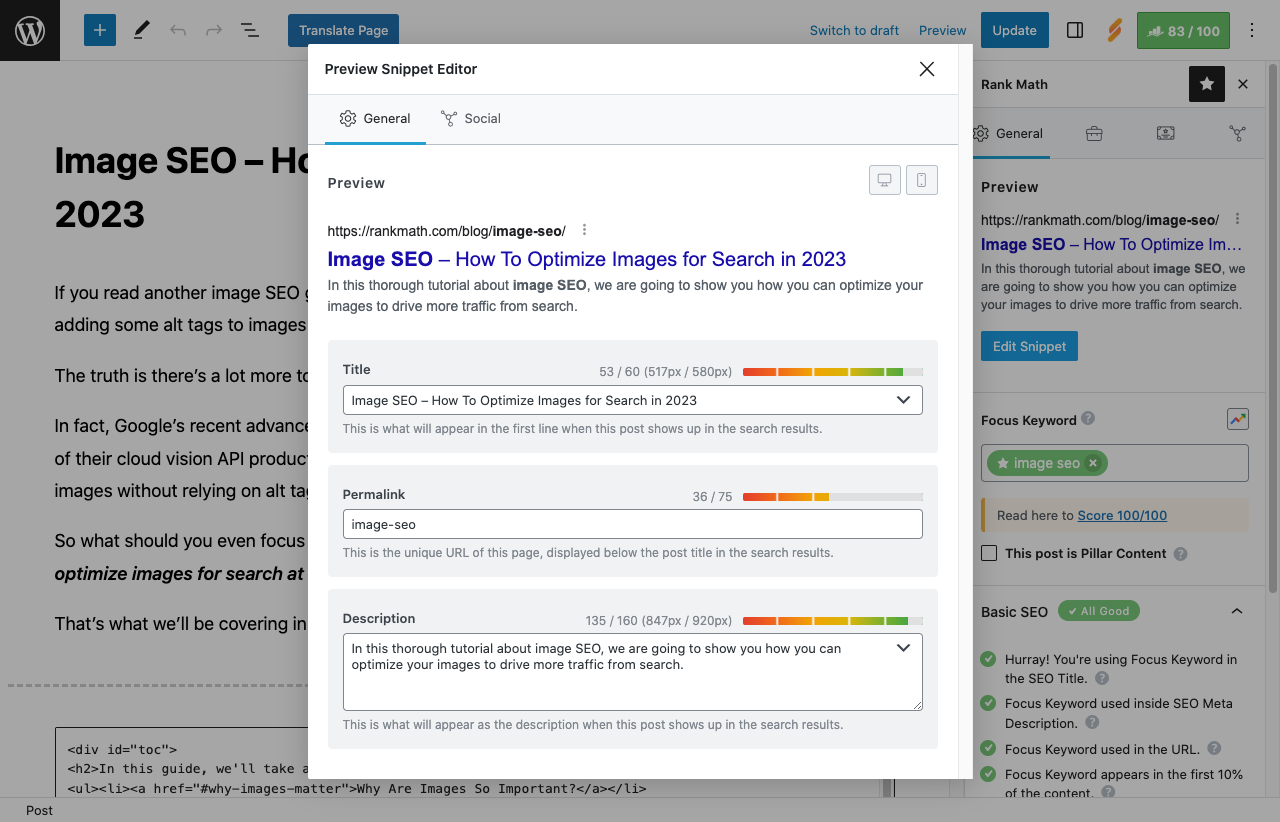
URL Structure and Permalinks
URL structure and permalinks play a significant role in both user experience and search engine optimization. It’s essential that you keep your URLs concise and readable that accurately describe your page’s content. Use hyphens (-) to separate words in your URLs to improve readability.
You can easily choose the permalink from the variety of structures that are available in WordPress.
To do so, navigate to Settings > Permalinks from your WordPress dashboard. By default, Plain structure is used by WordPress. However, this is not the best option suitable for your SEO. You can select a different setting and then save your changes.
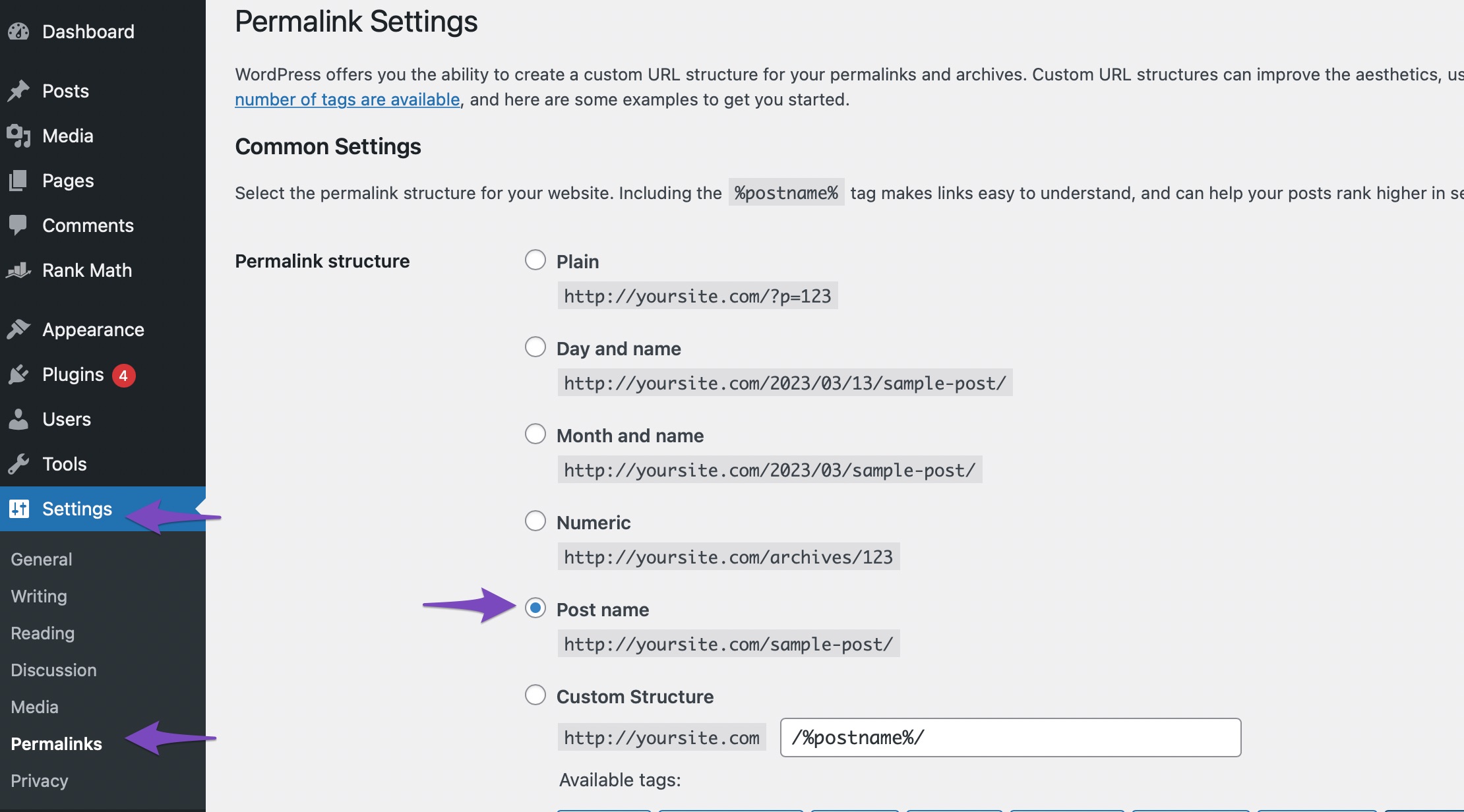
For a clean and user-friendly URL structure, consider removing unnecessary parameters like session IDs and tracking codes. If you have duplicate content across multiple URLs, implementing canonical URLs can help search engines understand the primary page.
3.6 Build Natural Links
Understanding the Importance of Backlinks
Link building is another important aspect of content SEO that involves acquiring external links from other websites to your own. Google uses links as a signal when determining the relevancy of pages and finding new pages to crawl.
Backlinks from reputable and authoritative sites can impact your search engine rankings. Not only this but building quality backlinks can also drive referral traffic to your website.
According to Google, the quantity of backlinks doesn’t matter, but quality does. Hence, make sure to create content that’ll help your readers, and they’d like to recommend it to others.
Strategies for Acquiring High-Quality Backlinks
One of the most effective strategies for acquiring high-quality backlinks is to create exceptional content that naturally attracts links. When your content is informative, valuable, and unique, other website owners and influencers in your niche will be more inclined to link it back.
Another strategy to build links is to contact website owners, bloggers, influencers, or industry experts. This process helps you build relationships, establish connections, and collaborate with influential individuals in your niche. These relationships can lead to future opportunities for guest posting, collaborations, and cross-promotion, further expanding your online presence.
Offering testimonials and reviews for products/services you genuinely appreciate can also result in backlinks from the respective companies’ websites.
Monitoring and Managing Backlinks
Monitoring and managing backlinks is also important to maintain a healthy backlink profile and maximize the impact of backlinks on your site. It allows you to identify potential issues, stay informed about new opportunities, and take necessary steps to protect and enhance your backlink portfolio.
Also, not all backlinks are equal. It’s important to remove toxic or low-quality backlinks that may harm your website’s reputation or trigger search engine penalties.
Sometimes, you may come across backlinks that are way beyond your control, such as those coming from spammy websites. In such situations, you can use the Google Disavow tool that’ll allow the search engines to ignore those backlinks.
Use internal links to guide your users to navigate to the related information within your website.
You can further refer to our link building guide in which we’ve covered the simple link-building methods to build links to your website.
3.7 Leveraging Social Media for SEO Content
Engaging With Your Audience on Social Media
For all the social butterflies out there, you must use the power of social media to engage with your audience like never before!
It’s important that you use social media and share your content to reach a wider audience. When your audience takes the time to comment on your posts or sends you messages, it’s essential to respond promptly and thoughtfully. This shows your audience that you value their input, and it creates a sense of connection.
For instance, here’s how we promptly share our articles/videos to users on our Facebook group.
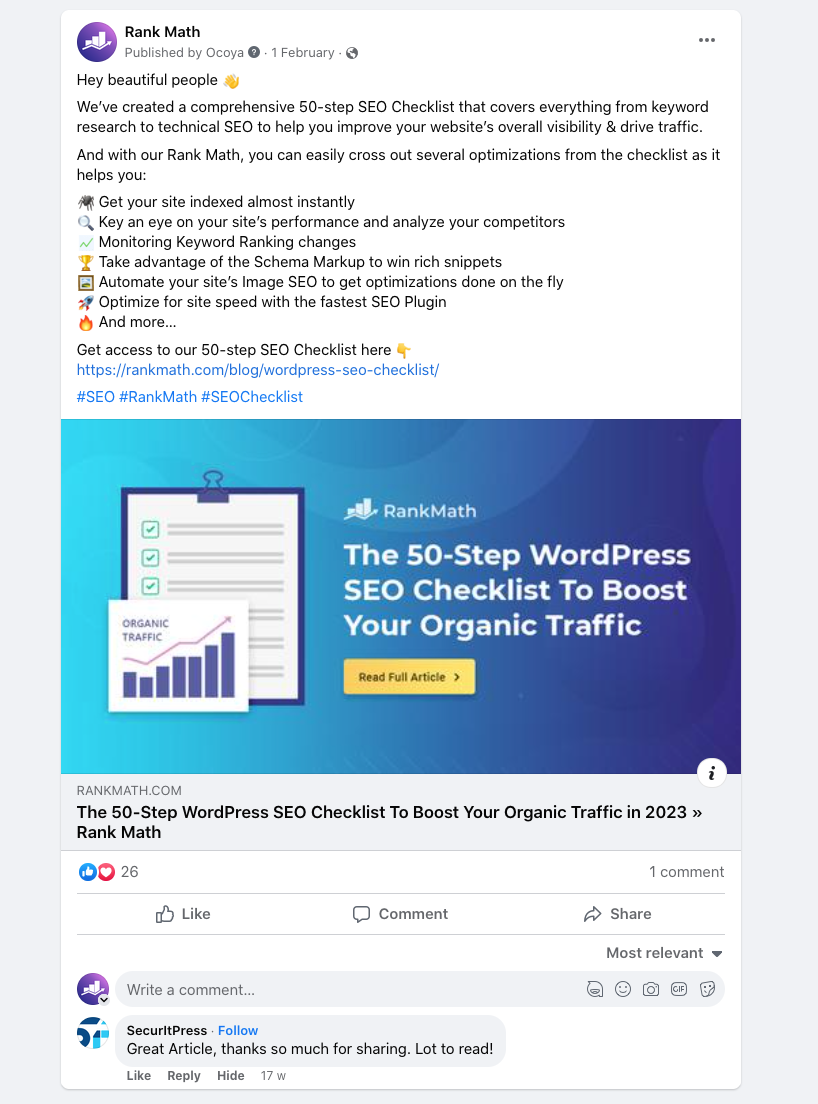
Amplifying Your Content Through Social Channels
The next stage is to use social media to amplify the reach, visibility, and engagement of your SEO content.
Social media platforms provide powerful targeting tools to guarantee that the right audience sees your content. You can define demographics, interests, and behaviors to tailor your content promotion to specific segments, increasing the likelihood of engagements and conversions.
Social media platforms also offer robust analytics tools that provide insights into content performance, audience engagement, and demographic information. Here’s how Facebook shows the performance of a post and provides insights into the audience’s engagement.

By analyzing this data, you can refine your content strategy and audience preferences and optimize future campaigns.
3.8 Mobile Optimization for SEO Content
Responsive Design and Mobile-Friendly Practices
Responsive design and mobile-friendly practices are essential in today’s digital era, where mobile usage continues to soar. It is important that you provide a seamless browsing experience across various devices to your users.
Responsive design is an approach that ensures websites automatically adjust and respond to your user’s device, screen size, and orientation without sacrificing usability or readability.
For instance, Amazon, a leading e-commerce platform, has a responsive design that ensures its website and product pages are accessible and user-friendly across various devices. The users can shop without any hassle from their desktops, smartphones, tablets, etc.
On the desktop version, the website has a wide layout to make use of the available screen space.
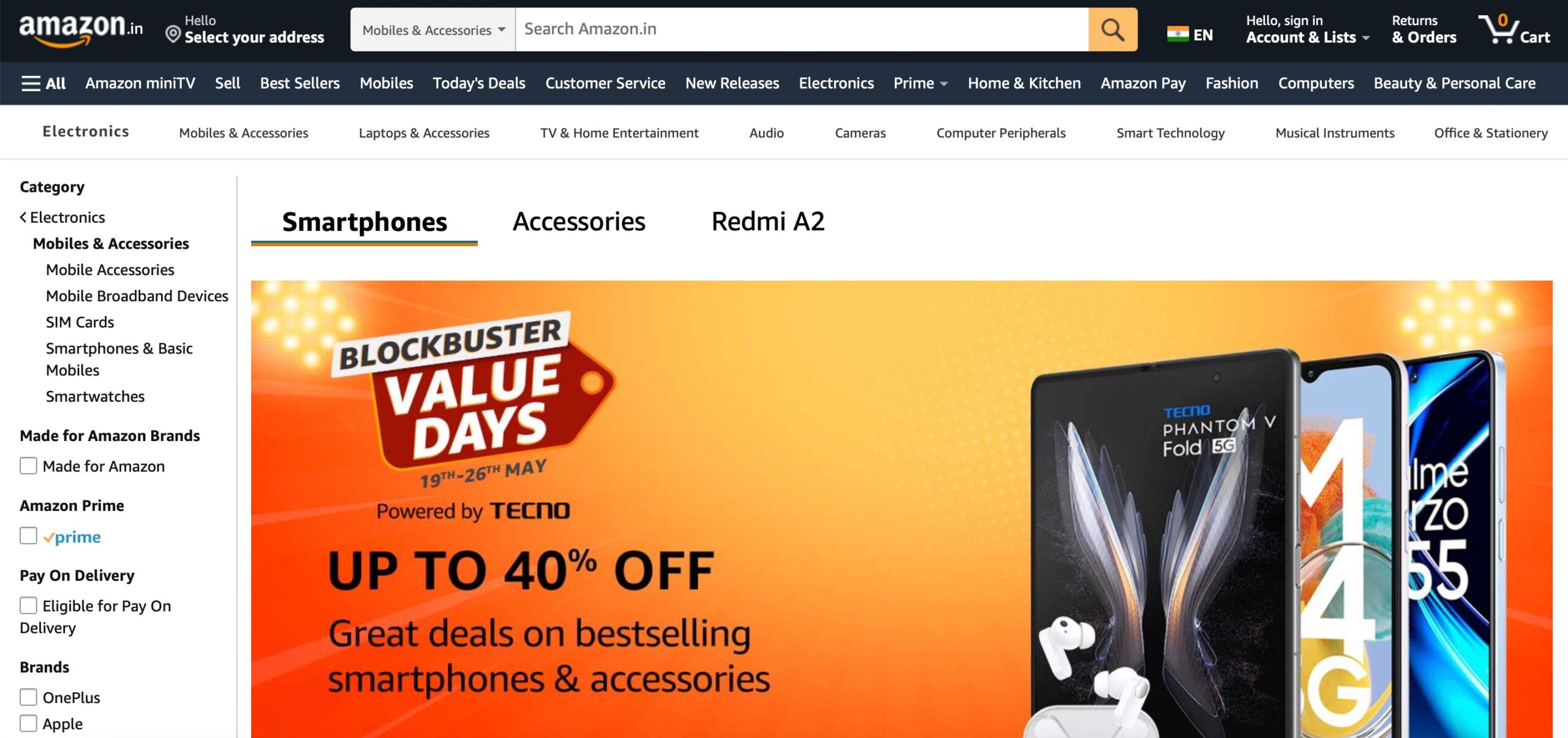
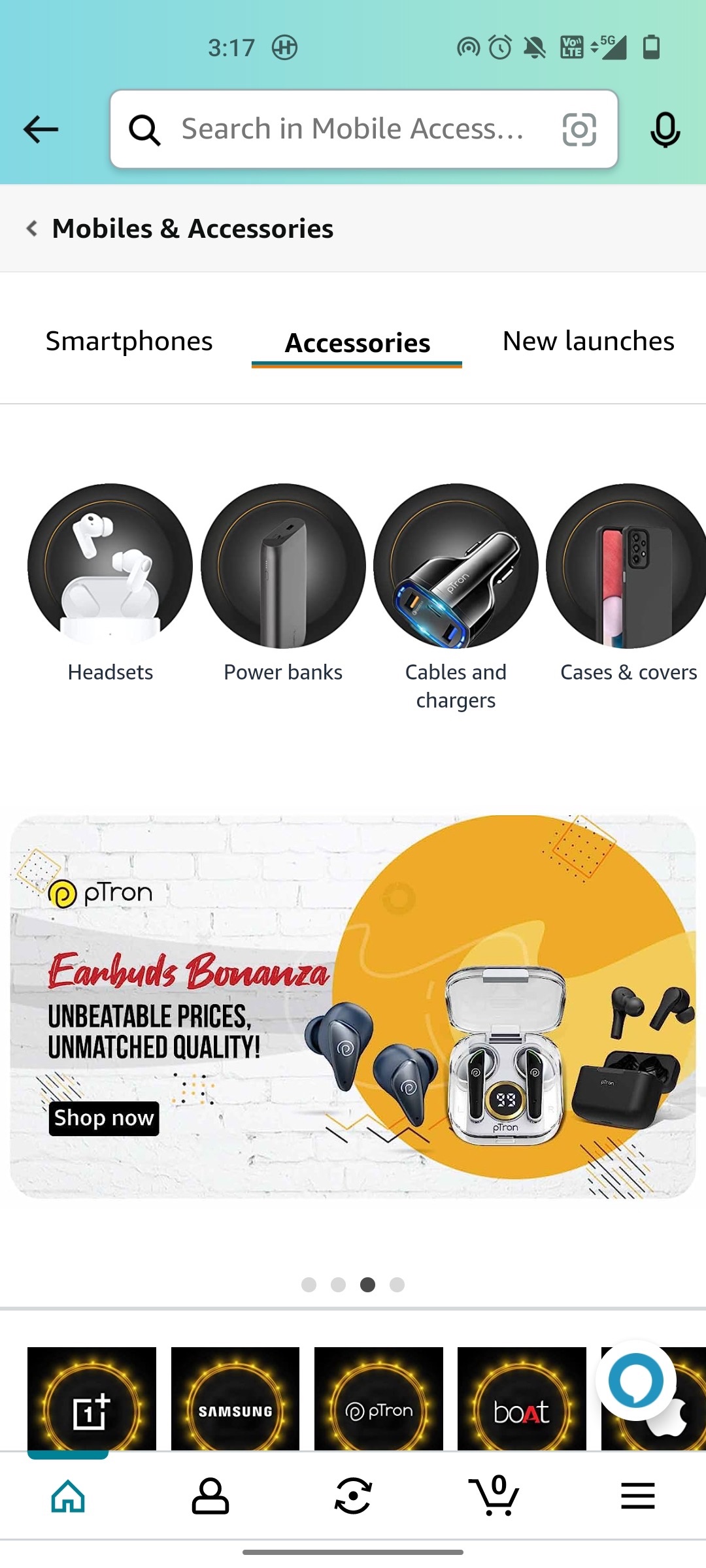
Whereas on the mobile version, the layout is optimized for smaller screens to ensure a better user experience, as shown below.
Mobile-friendly practices involve implementing specific design and development techniques to optimize a website’s usability and performance on mobile devices.
For instance, implementing a mobile-friendly practice will involve optimizing the font size and spacing, ensuring the buttons and links are easily tappable, and compressing images to reduce the loading time on mobile devices.
Mobile devices accounted for 58% of global website traffic, according to Statista. This demonstrates the significance of mobile usage and the relevance of catering to mobile devices.
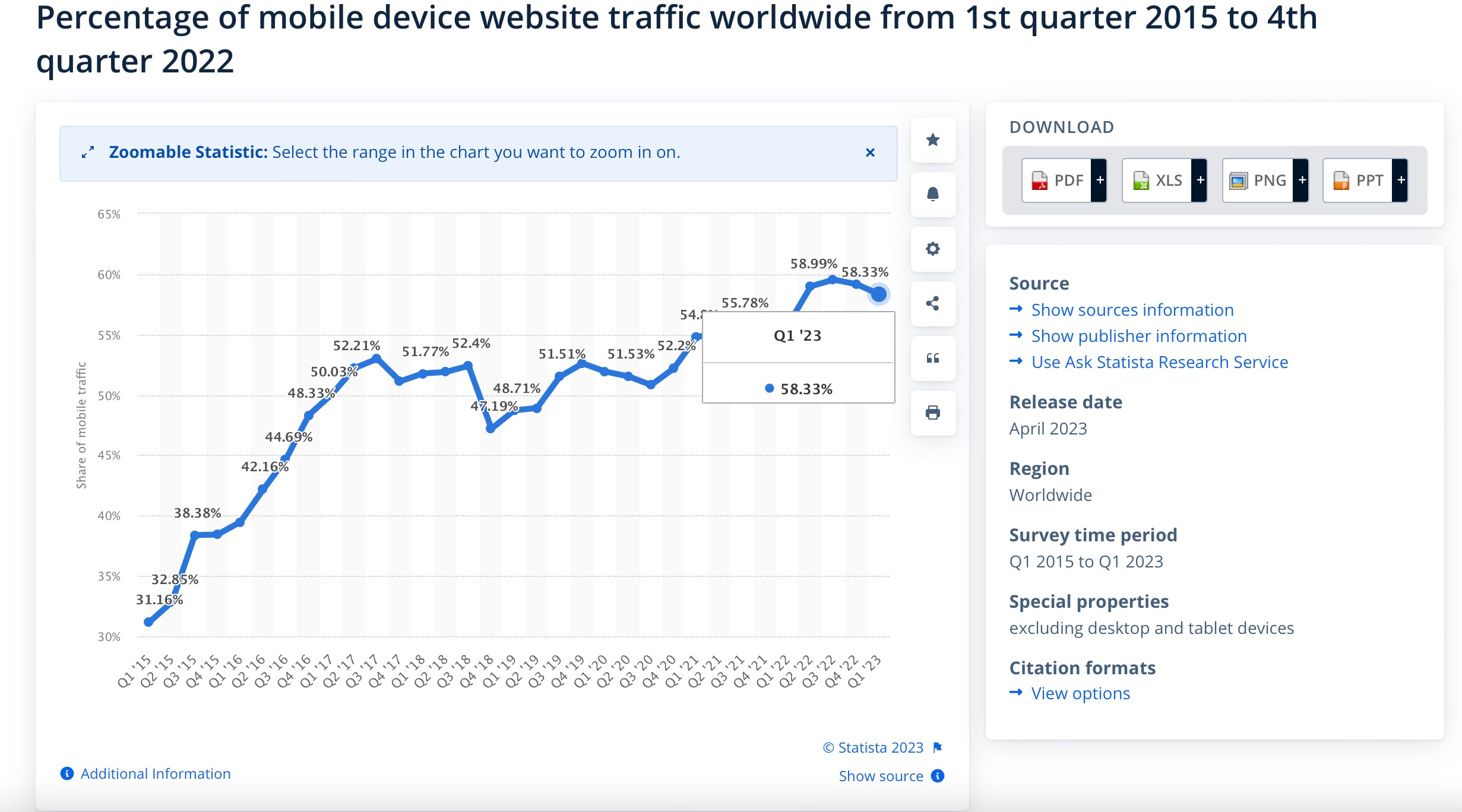
Image Reference: https://www.statista.com/statistics/277125/share-of-website-traffic-coming-from-mobile-devices/
Optimizing Page Load Speed for Mobile
Have you landed a website on your mobile device and found yourself impatiently waiting for it to load? You’re certainly not alone!
Mobile users’ attention spans are shorter than ever; therefore, they have less tolerance for slow-loading pages.
Have you heard this famous quote by web performance expert Harry Roberts “Every millisecond counts. The faster, the better.”?
Slow-loading pages can result in frustration and abandonment, thereby negatively impacting user engagement and conversions.
In order to optimize your page load speed, we’ve listed a few practices that you can follow:
- Optimize Images: Compress your images without compromising quality to reduce the file size and improve load time.
- Minify Code: Remove unnecessary characters and whitespace from your website’s code.
- Leverage Caching: Use cache plugins like WP Rocket to leverage browser caching and allow faster page loads.

You can use the PageSpeed Insights tool, which indicates how well a page performs and also provides performance optimizations.
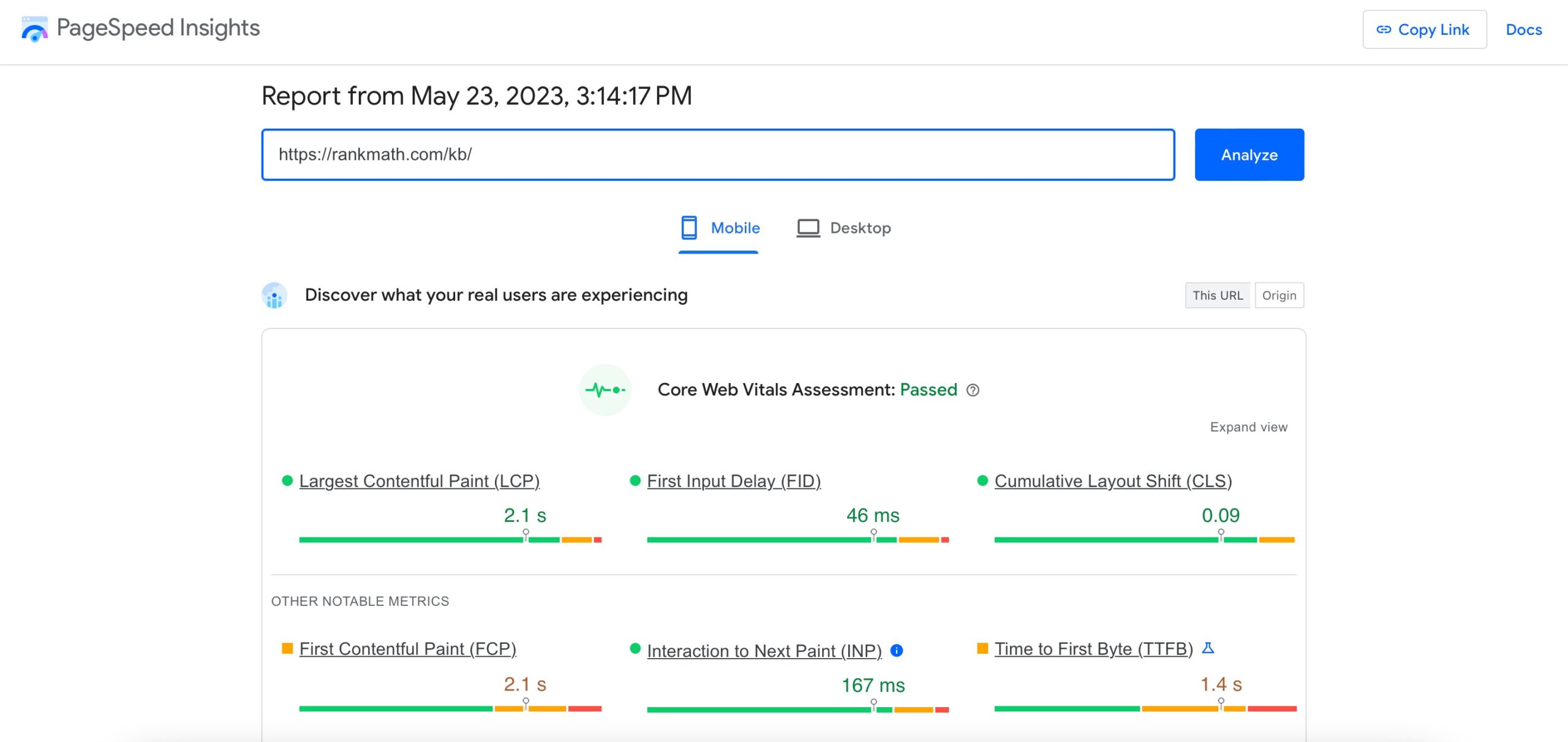
By prioritizing page load speed, you can enhance user satisfaction, increase conversions and stay ahead in the competitive online landscape.
3.9 Measuring SEO Content Performance
Setting Goals and Key Performance Indicators (KPIs)
It’s time to track your SEO content performance.
By analyzing relevant metrics and gathering insights, you can gain a deeper understanding of how your content is performing and make adjustments wherever needed.
We’ve listed below the KPIs that’ll help you track your SEO content performance.
- Organic Traffic: Monitoring the organic traffic provides valuable insights into its visibility and reach among search engine users.
- Keyword Rankings: Tracking keyword rankings allows you to assess how well your content performs in SERPs for targeted keywords.
- Click-Through Rate(CTR): Monitoring the CTR of your content provides insights into how well your content attracts clicks from search engine users.
- Bounce Rate: Bounce rate helps you understand how engaging and relevant your content is to your visitors.
- Conversion Rate: Tracking the conversion rate of your SEO content helps evaluate how effectively your content drives desired actions, such as form submissions, purchases, or subscriptions.
By regularly measuring these KPIs, you can gain valuable insights into the effectiveness of your SEO content and identify areas of improvement.
Rank Math’s Analytics module helps you see where your website’s current state with respect to organic traffic. You can easily keep track of keywords, top 5 winning posts, top 5 losing posts, tracked keywords, and much more with the help of our built-in Advanced SEO Analytics module.
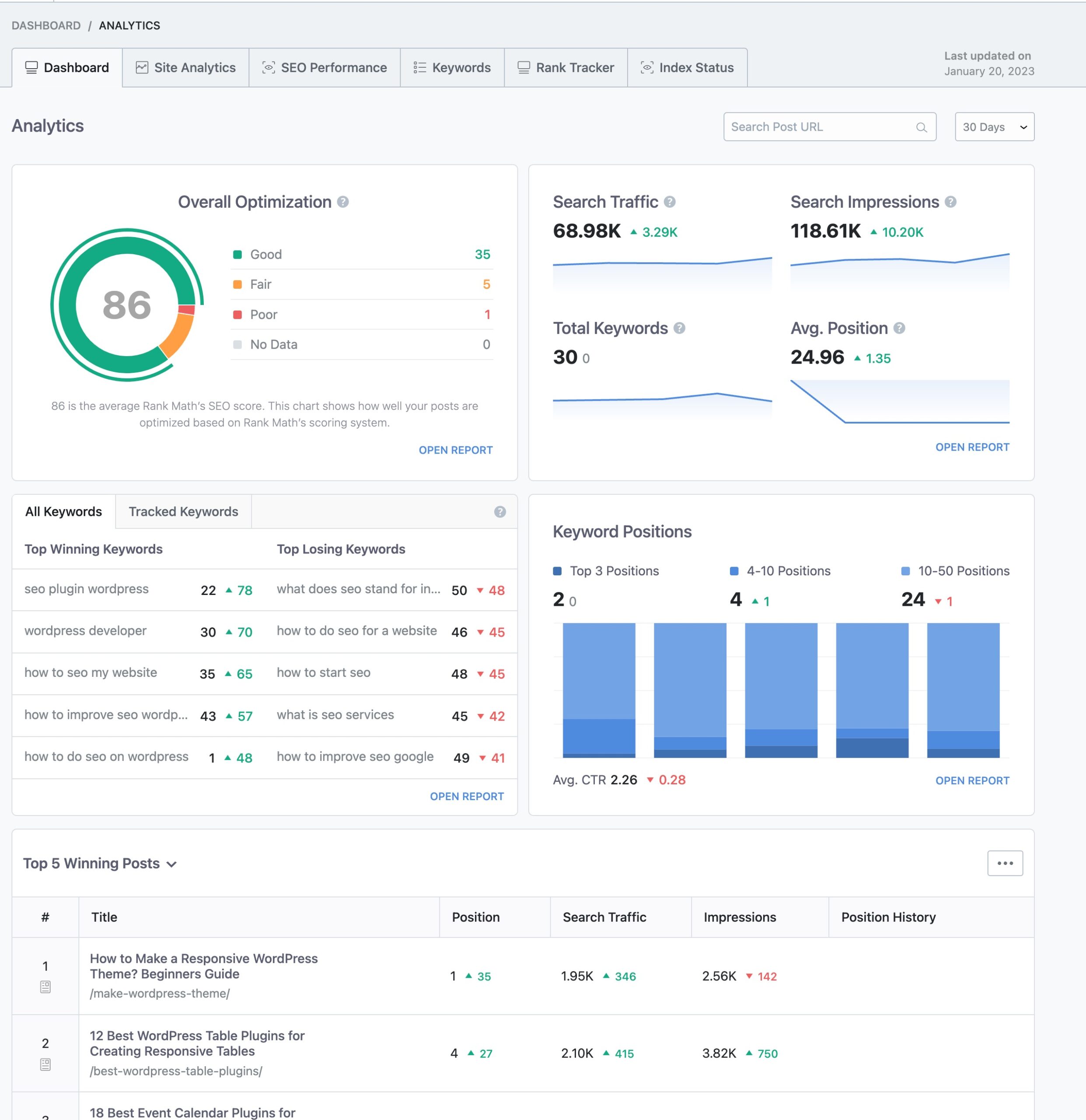
Using powerful tools like Google Analytics and Search Console, you can get valuable insights and data to optimize your SEO content. Let’s explore how you can use the tools to enhance your SEO content strategy.
Using Google Analytics and Search Console
Google Analytics is a comprehensive web analytics tool that helps you track and analyze various aspects of your website’s performance.
By analyzing the Report snapshots in Google Analytics, you can get an overview of how your content is performing.
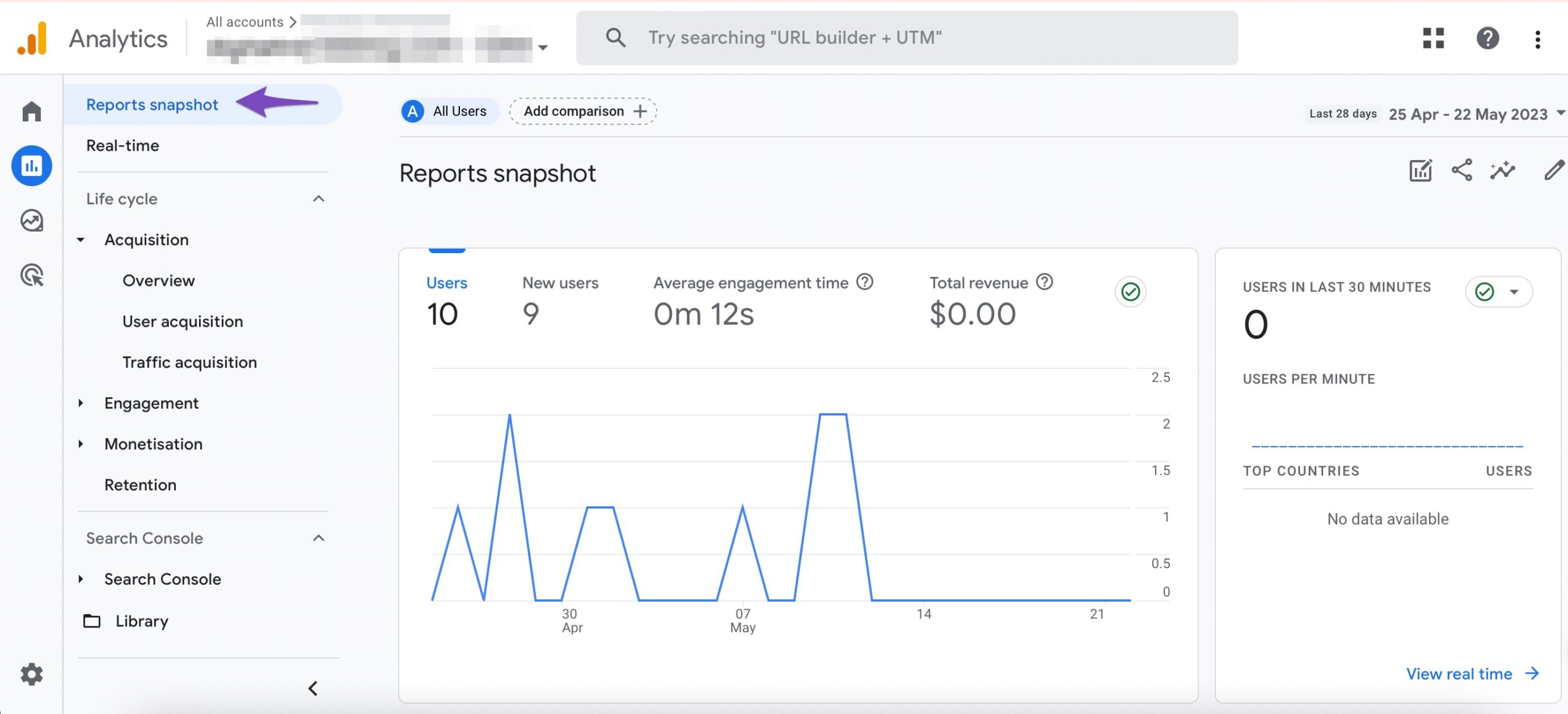
By utilizing the Performance report in Google Search Console, you can gain insights into the keywords that drive organic traffic to your website, their click-through rates, average position, etc., of your content in the search results.

By analyzing the data from Google Analytics and Google Search Console, you can identify content gaps and opportunities to improve your SEO content.
3.10 Staying Up-to-**** With SEO Trends and Algorithm Updates
The Dynamic Nature of SEO
Search engines like Google constantly evolve their algorithms to provide more accurate and relevant search results. Staying informed about the latest trends and updates ensures your SEO content remains relevant and optimized.
You can always refer to our Google Updates page foto keep an eye on the various algorithm updates and how to deal with them.
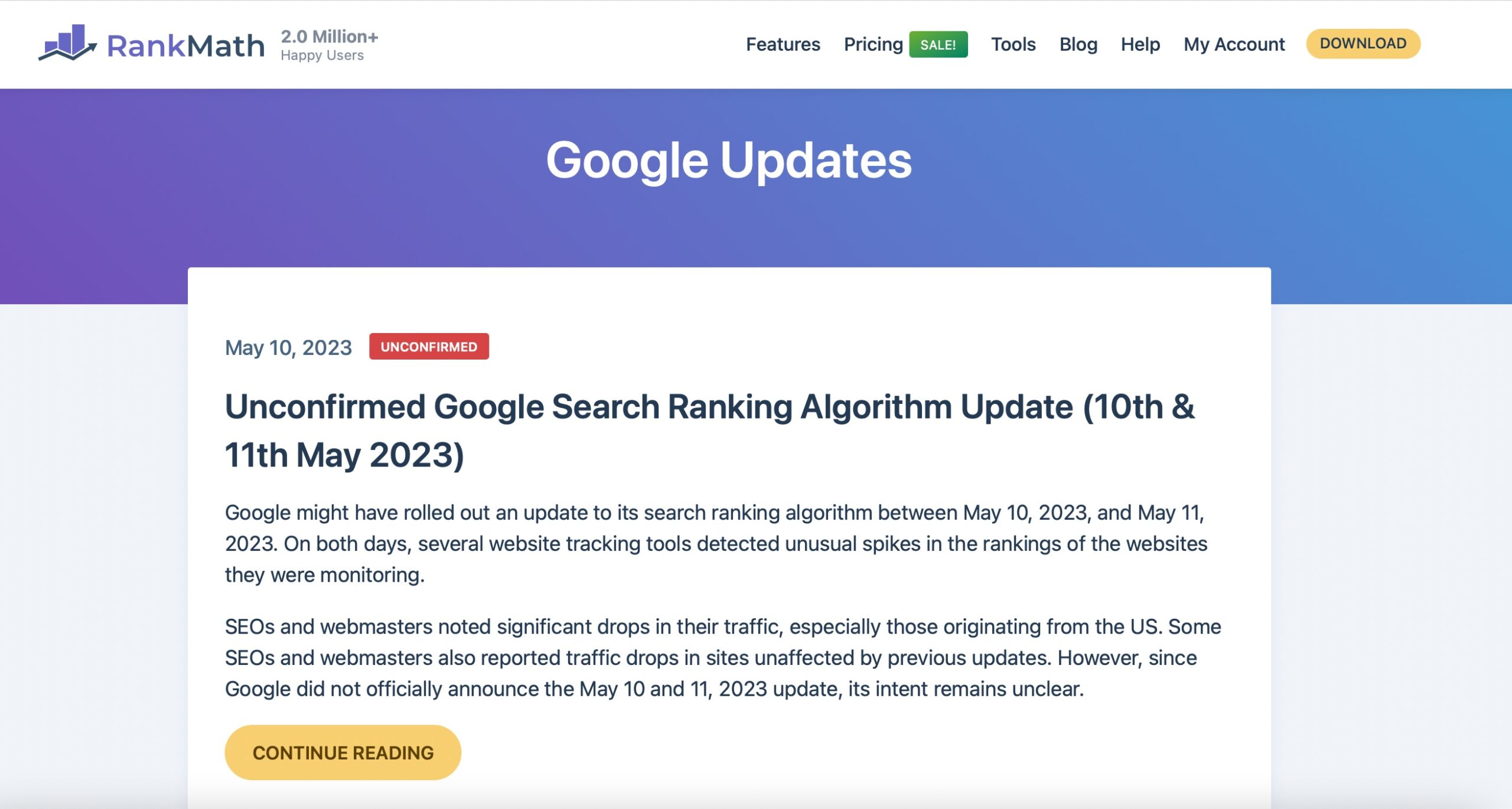
User behaviors and search patterns constantly evolve as technology advances and user preferences change. It’s necessary to understand these shifts to create SEO content that aligns with user intent.
For instance, the rise of voice search through smart speakers and mobile devices has led to changes in how your users interact with search engines. Optimizing content for voice search queries has become important for SEO content.
Content formats have also diversified beyond traditional text-based articles. Visual content, videos, infographics, and interactive elements have gained prominence. Optimizing video content for search engines, using descriptive titles and meta tags, helps improve visibility in video search results.
Staying ahead requires adapting to changing trends, implementing innovative strategies, and delivering exceptional user experiences. Continuously ask questions, test new strategies, and evolve your approach to meet the ever-changing demands of SEO.
Resources for Staying Informed
We’ve listed some of the key resources and their benefits that’ll help you to stay up-to-**** with the latest trends and best practices.
- SEO Blogs and Websites: Following recognized blogs and websites is an excellent way to remain updated on the newest changes in SEO content. Moz, Search Engine Journal, and Search Engine Land are well-known blogs that post articles, case studies, and the most recent SEO advances in SEO content on a regular basis.
- Webinars and Online Events: Participating in webinars and online events allows you to learn from industry professionals, acquire insights into the newest trends, and grasp best practices for SEO content. Platforms such as SEMrush, HubSpot, and Moz frequently conduct webinars in which industry leaders share their knowledge and experience.
- SEO Communities and Forums: Participating in SEO communities and forums allows you to network with like-minded experts, exchange ideas, and stay updated on the newest trends.
- Official Search Engine Resources: Monitoring official search engine resources, such as Google’s Webmaster Blog and Bing Webmaster Blog, can provide insights into algorithm updates and SEO content requirements.
4 Wrapping It Up: Embrace the Journey of SEO Content
Finally, SEO content is an essential component of any effective online presence.
You can optimize your content to rank better in search engine results, attract targeted traffic, and achieve your business goals by using the correct strategies and approaches.
Remember to perform extensive keyword research, generate valuable and user-centric content, optimize the structure of your website, and remain updated on the newest SEO trends and algorithm upgrades.
You can increase your visibility, reach a larger audience, and drive meaningful engagement by constantly refining and upgrading your SEO content. So, harness the power of SEO content and watch your business skyrocket.
So, go ahead and create SEO content that captivates, educates, and resonates with your audience. Embrace the journey, embrace the possibilities, and embrace your online presence!
You can refer to the below video to optimize your content for massive traffic. If you like this post, let us know by Tweeting @rankmathseo.
